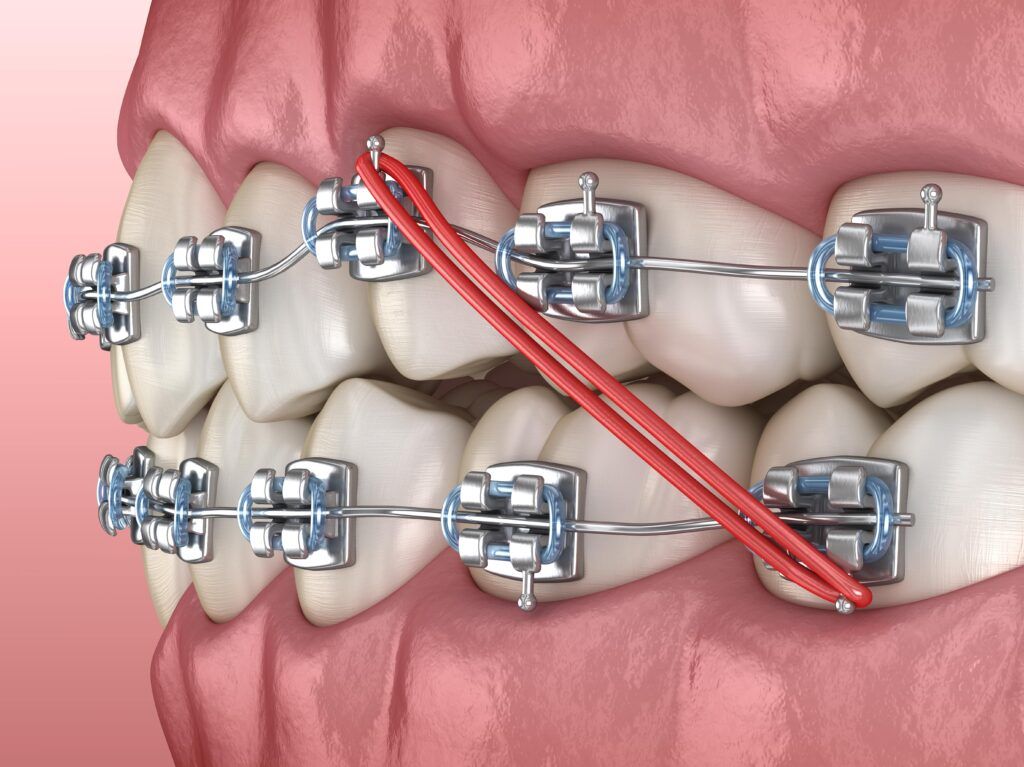What Sets Cumming Braces and Aligners Aside From Other Orthodontic Treatments
What Sets Cumming Braces and Aligners Aside From Other Orthodontic Treatments
Blog Article
Comprehensive Guide to Orthodontics Procedures for Dealing With Dental Imbalances
In the realm of orthodontics, the journey to achieving a perfectly lined up smile includes a myriad of procedures tailored to fix dental misalignments. From traditional dental braces to undetectable aligners and also medical alternatives, the area of orthodontics uses a variety of services to resolve varying levels of dental irregularities. Recognizing the complexities of each treatment, including their mechanisms, advantages, and prospective drawbacks, is crucial in making educated decisions about one's orthodontic therapy. As we browse via the extensive overview to orthodontic treatments for remedying oral imbalances, the intricate details of each approach will unfold, dropping light on the path towards a practical and unified oral positioning.
Orthodontic Procedures Introduction

Normal changes and surveillance are critical components of orthodontic therapy to make certain progress is on track and to make any type of required adjustments along the way. By going through orthodontic procedures, people can not only achieve a straighter smile but likewise improve their total oral health and wellness and function.
Standard Braces: How They Work
When considering orthodontic treatments for dental misalignments, typical braces stand out as a reliable approach for remedying teeth placing. Conventional dental braces consist of brackets, wires, and bands that function with each other to apply continual pressure on the teeth, slowly relocating them into the preferred positioning.
One key element of exactly how standard braces work is the procedure of bone renovation. As stress is put on the teeth with the dental braces, the bone bordering the teeth is reshaped to sustain the new tooth settings. This improvement is necessary for the lasting security of the corrected alignment. Patients will certainly require normal modifications at the orthodontist's office to make sure the dental braces remain to use the right pressure for effective teeth movement.
Unseen Aligners: Disadvantages and pros
Unseen aligners supply a very discreet and hassle-free option to standard braces for fixing dental imbalances. These clear, personalized trays are practically undetectable when put on, making them an appealing option for people looking for a much more aesthetically pleasing orthodontic treatment. Among the main advantages of invisible aligners is their removability, enabling less complicated upkeep of dental health compared to traditional dental braces. Individuals can get rid of the aligners before consuming or cleaning their teeth, decreasing the threat of food getting stuck in the home appliance and simplifying the cleaning process.

Surgical Orthodontic Options
Surgical interventions in orthodontics present feasible alternatives for addressing complicated dental misalignments that might not be effectively fixed through standard orthodontic therapies. While undetectable aligners and typical braces can deal with numerous orthodontic concerns, particular cases require medical intervention to achieve optimum results. Surgical orthodontic choices are usually suggested for severe malocclusions, substantial jaw discrepancies, and situations where the underlying bone structure requires alteration to achieve appropriate placement.
One common surgical orthodontic treatment is orthognathic surgical treatment, which entails repositioning the jaws to fix functional concerns such as problem speaking or chewing. This surgery is typically performed in partnership with an orthodontist that helps align the teeth prior to and after the procedure. Surgical orthodontics may additionally include treatments to subject impacted teeth, get rid of excess gum cells, or reshape the jawbone to create an extra harmonious facial profile.
Prior to considering surgical orthodontic options, clients go through an extensive evaluation to figure out the necessity and potential advantages of such treatments. invisalign. While surgical procedure might seem difficult, it can considerably enhance both the feature and visual appeals of the smile in instances where conventional orthodontic treatments fail
Retainers and Post-Treatment Care

Post-treatment care entails complying with the orthodontist's instructions faithfully. This may include proper oral health practices, participating in follow-up visits, and putting on the retainers as prescribed. Failure to abide by post-treatment treatment instructions can result in regression, where the teeth gradually relocate back towards their initial positions. Constant retainer wear, great dental hygiene, and normal dental exams are essential for maintaining the results achieved through orthodontic surgery and guaranteeing the lasting security of the remedied dental placement.
Conclusion
In conclusion, orthodontic treatments provide various choices for remedying dental misalignments. Standard braces use steel brackets and cords to shift teeth right into proper placement. Unseen aligners supply a more discreet alternative but might not appropriate for all cases. Surgical useful site orthodontic alternatives are available for extra serious imbalances. Retainers are generally made use of post-treatment to maintain the brand-new placement. Overall, orthodontic procedures can efficiently enhance oral health and wellness and visual appearance.
As we browse via the detailed guide to orthodontic procedures for dealing with oral misalignments, the detailed information of each technique will certainly unfold, losing light on the path toward a functional and unified oral positioning. - braces
One of the most common orthodontic therapies is the use of braces, which are composed of steel braces and wires that use mild pressure to progressively shift teeth right into the desired setting.When considering orthodontic treatments for oral imbalances, standard dental braces stand out as a time-tested method for remedying teeth positioning. Additionally, invisible aligners may not be suitable for intricate orthodontic problems that need even more substantial teeth movement, as they are usually recommended for mild to modest instances. Retainers are custom-made orthodontic devices made to hold teeth in their remedied settings after the completion of orthodontic therapy.
Report this page